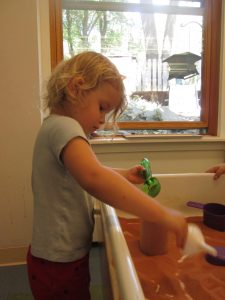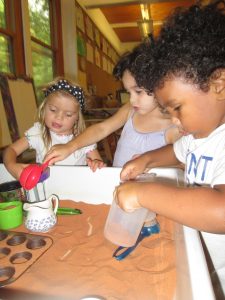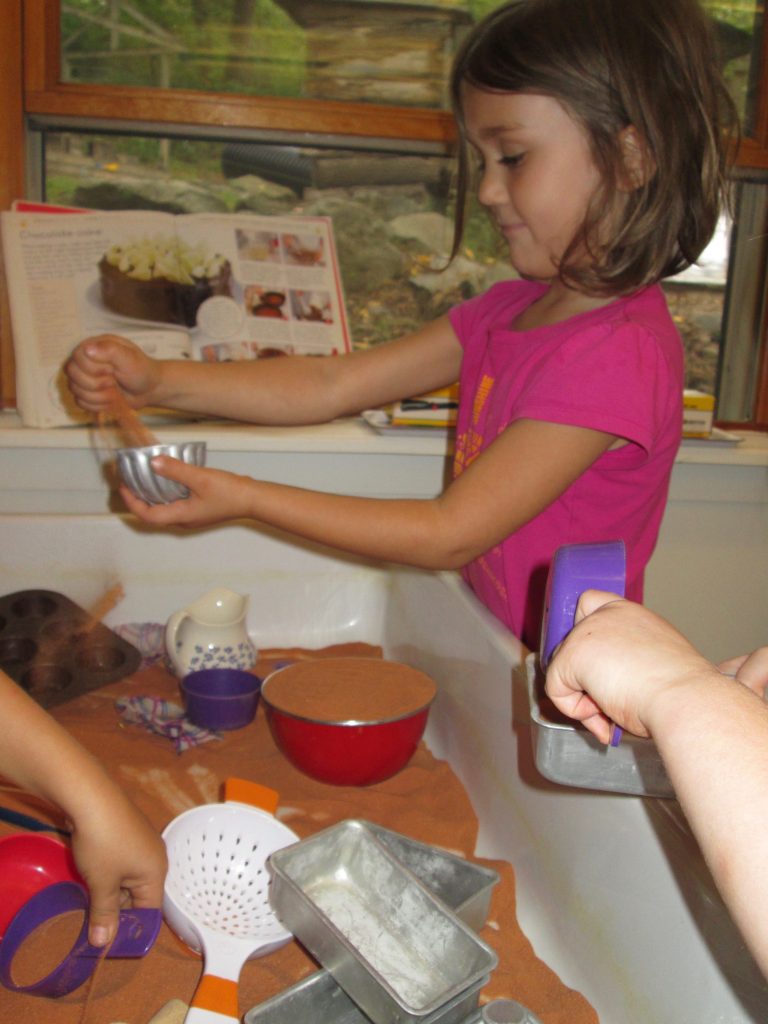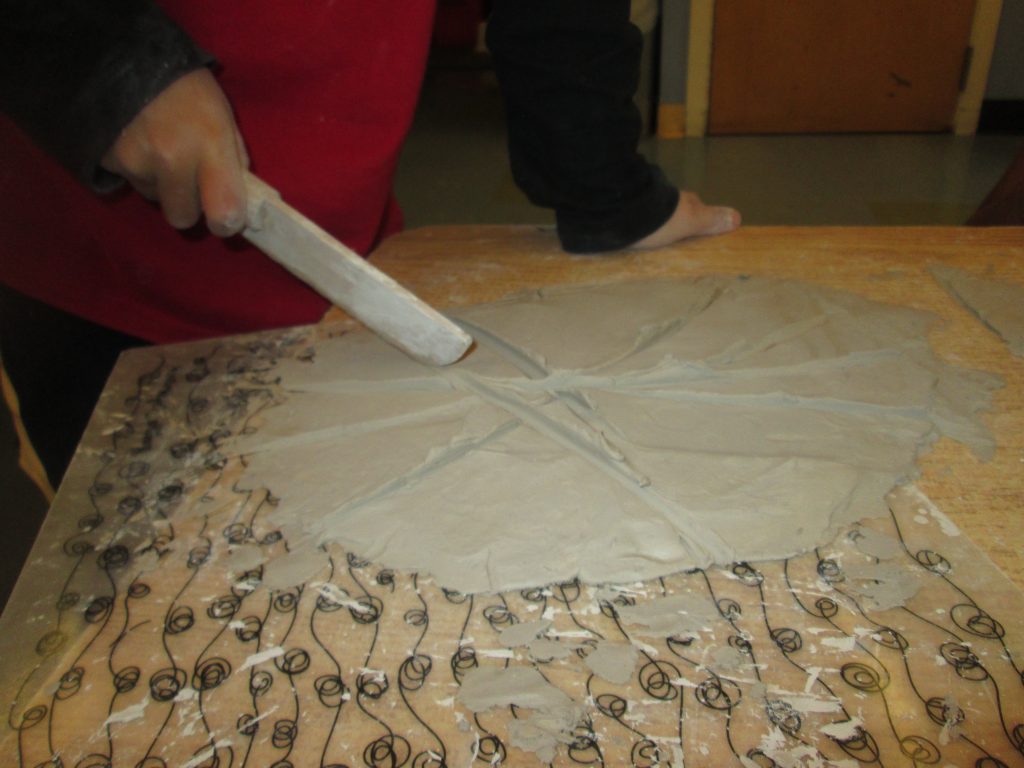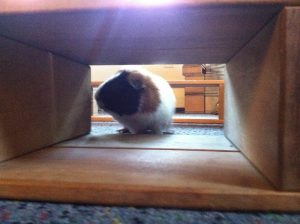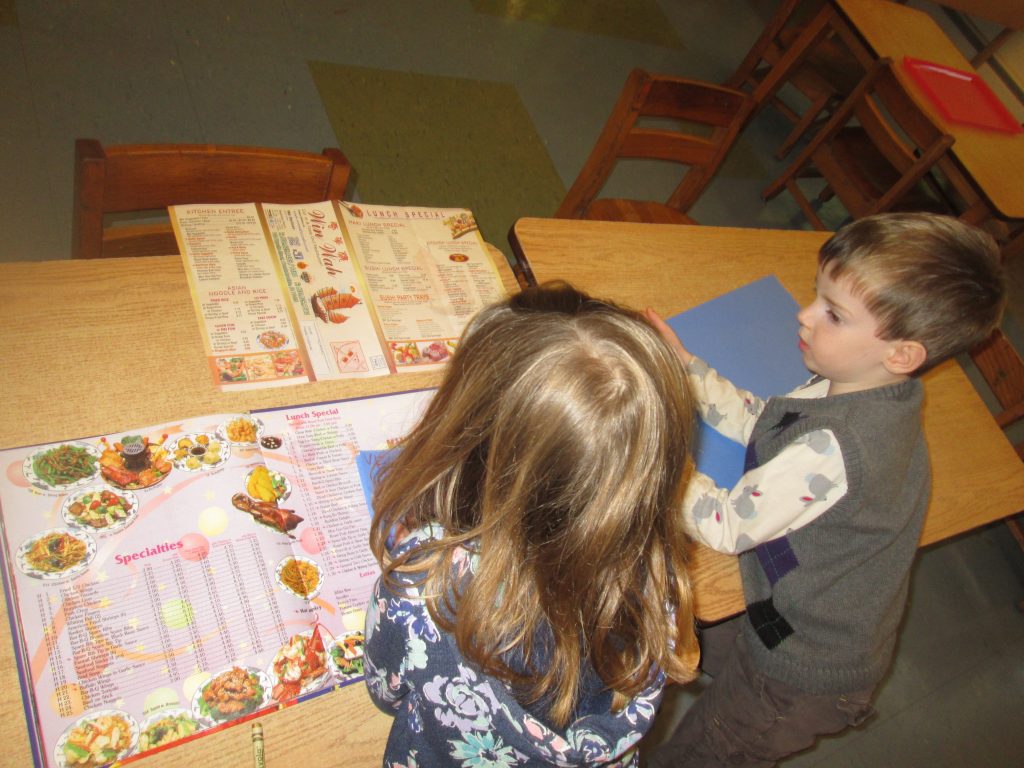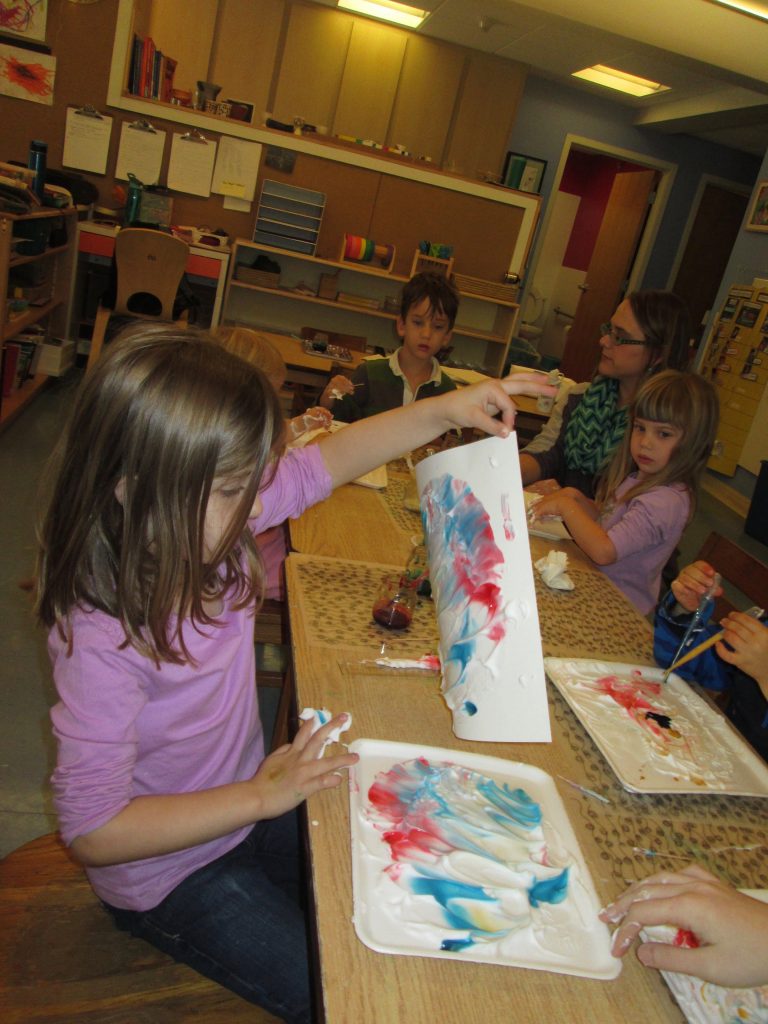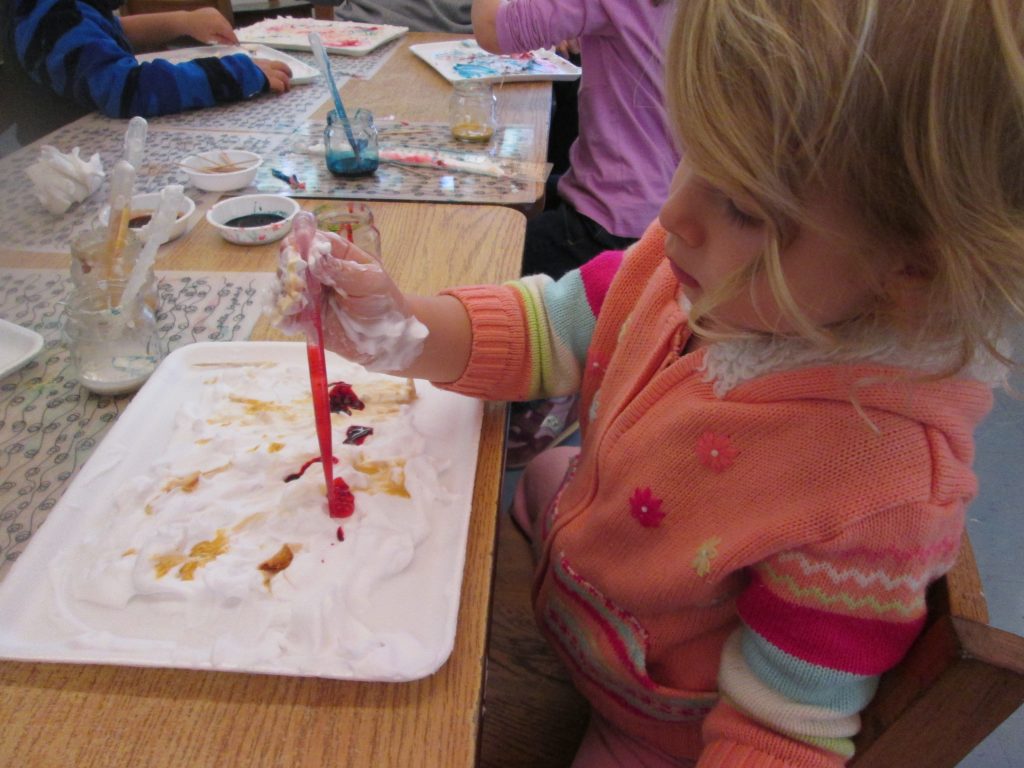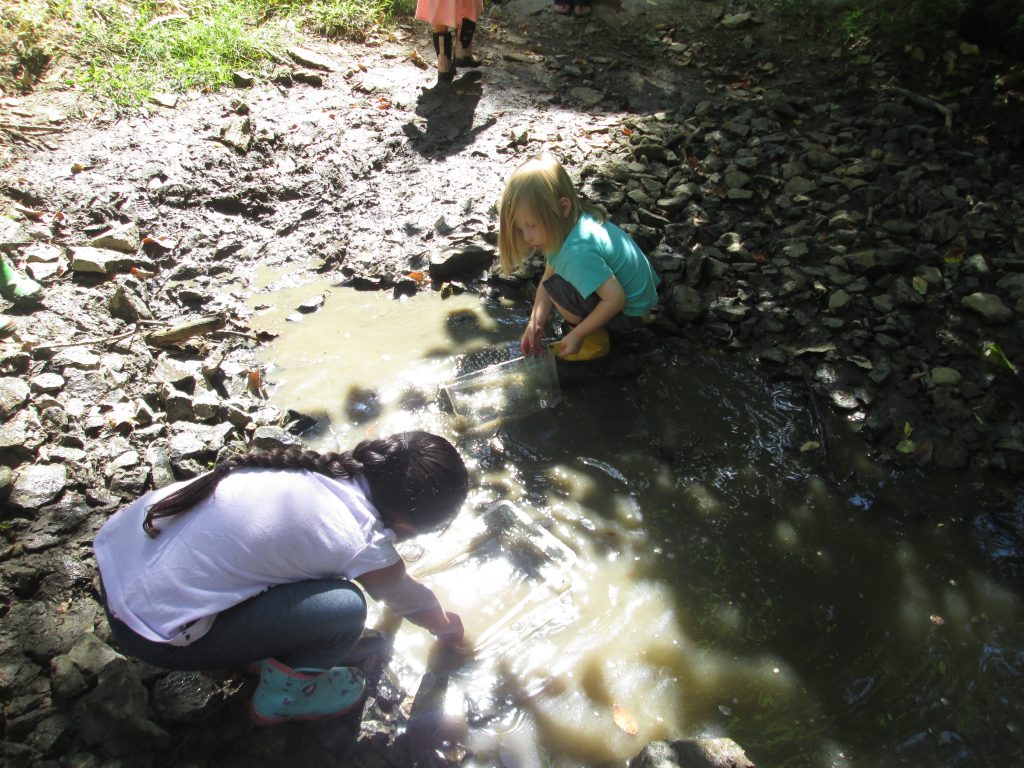What Is a Recipe?
We recently asked our nursery learners to help us answer the following question: What is a recipe? Immediately someone exclaimed, “Steps!” Young children enjoy describing how something is achieved through a series of actions or steps. When our nursery learners engage in dramatic play involving mud kitchens, palaces, and camping, contribute to group meetings to share ideas about conflict resolution, collaborate to add to circle songs and movement games, and work together on things such as kneading dough to printmaking, they also begin to make meaning of dialogue based on recipes, step-by-step instructions, lists, and other examples of procedural text. Outside in the mud kitchen, children can be heard instructing each other on how many cups of water to add to their sand batter. Other friends may be on the playbarn brainstorming on a supply list needed for the road trip in their camper. Another friend may share the sequential steps to a game at circle. A group of learners might join in mixing the ingredients to form bread dough following the steps from a cookbook.
The experience of walking and talking together through a series of steps, diagrams, and other similar text forms promotes visual literacy in our learners. It provides the perfect opportunity for them to explain how to make something or how to begin something in many contexts. As noted in I See What You Mean, by Steve Moline (2012, Stenhouse Publishers), they begin thinking about a meaningful sequence, visual elements and vocabulary that explain the sequence, and observations about what is happening or changing during the process. Here are some examples of visual literacy happening inside and outside of the classroom, in step-by-step instructions of course!
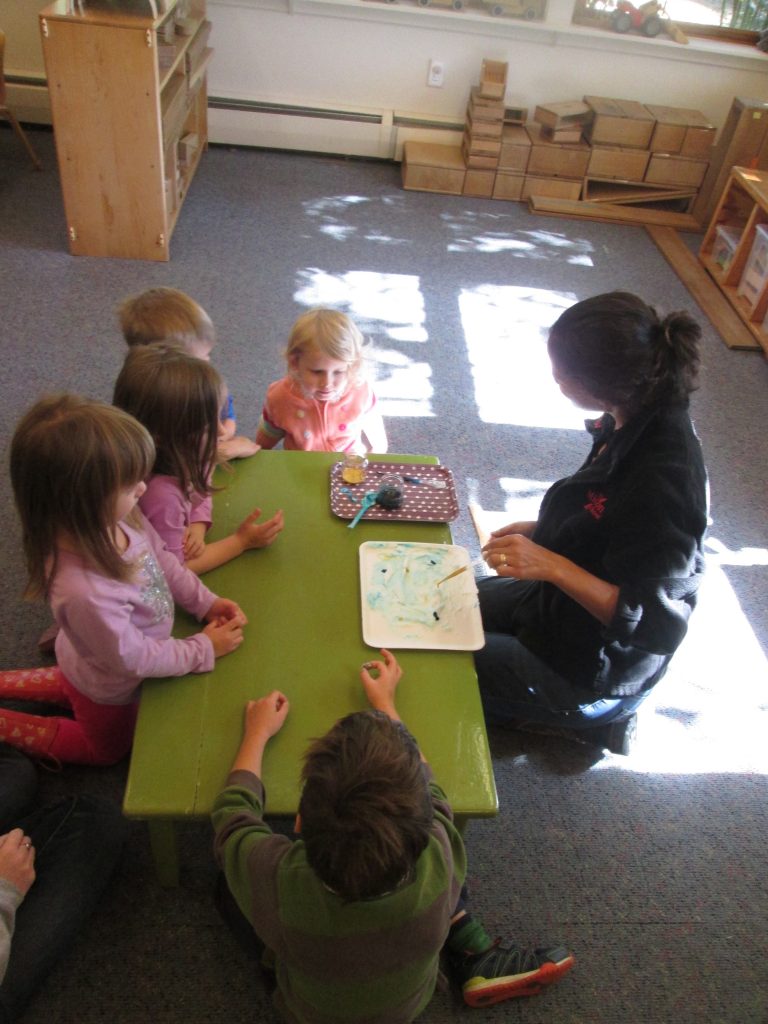 Demonstrating the steps to shaving-cream printmaking.
Demonstrating the steps to shaving-cream printmaking.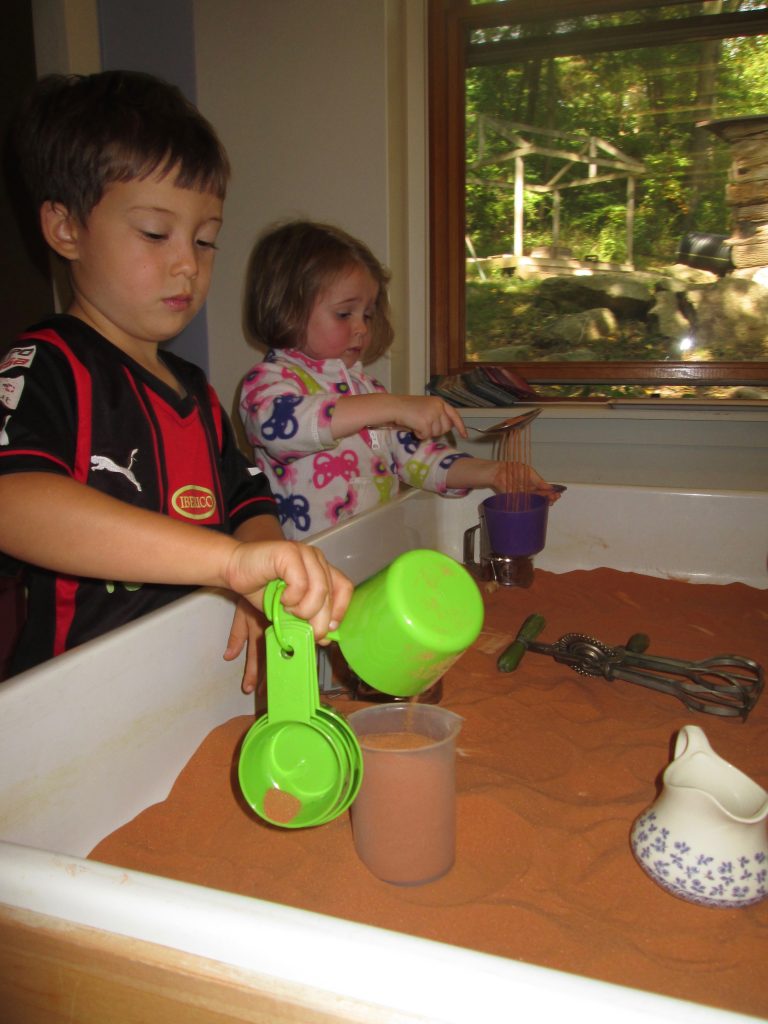 Measuring and sifting at the sand table.
Measuring and sifting at the sand table.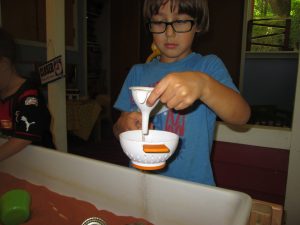 “Oh, wait, I’m going to try something different.”
“Oh, wait, I’m going to try something different.”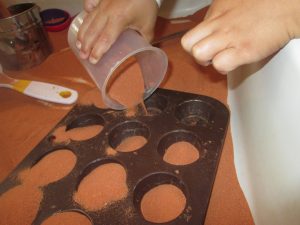 Simran: “It’s really, really soft, and it looks like a carpet.”
Simran: “It’s really, really soft, and it looks like a carpet.”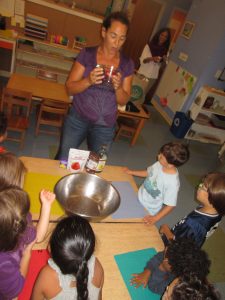 Step 1: Gathering the ingredients, such as sorghum flour, to make gluten-free bread with Shayna.
Step 1: Gathering the ingredients, such as sorghum flour, to make gluten-free bread with Shayna.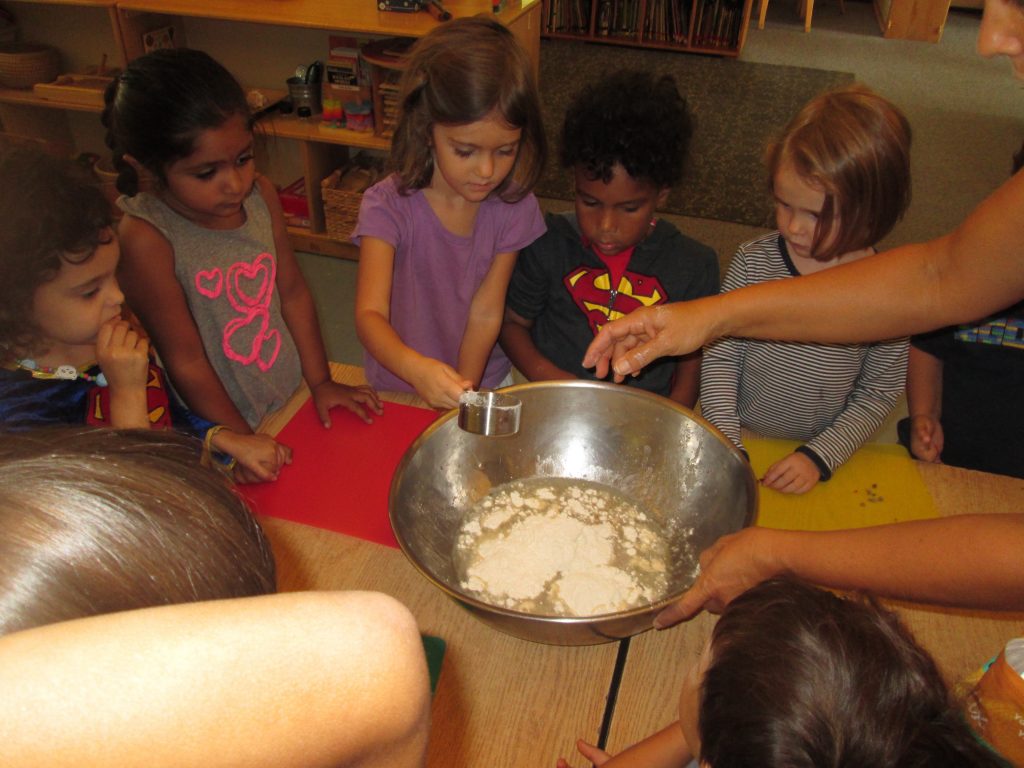 Step 2: Mixing.
Step 2: Mixing. Step 3: (the most fun!) Kneading the dough…
Step 3: (the most fun!) Kneading the dough…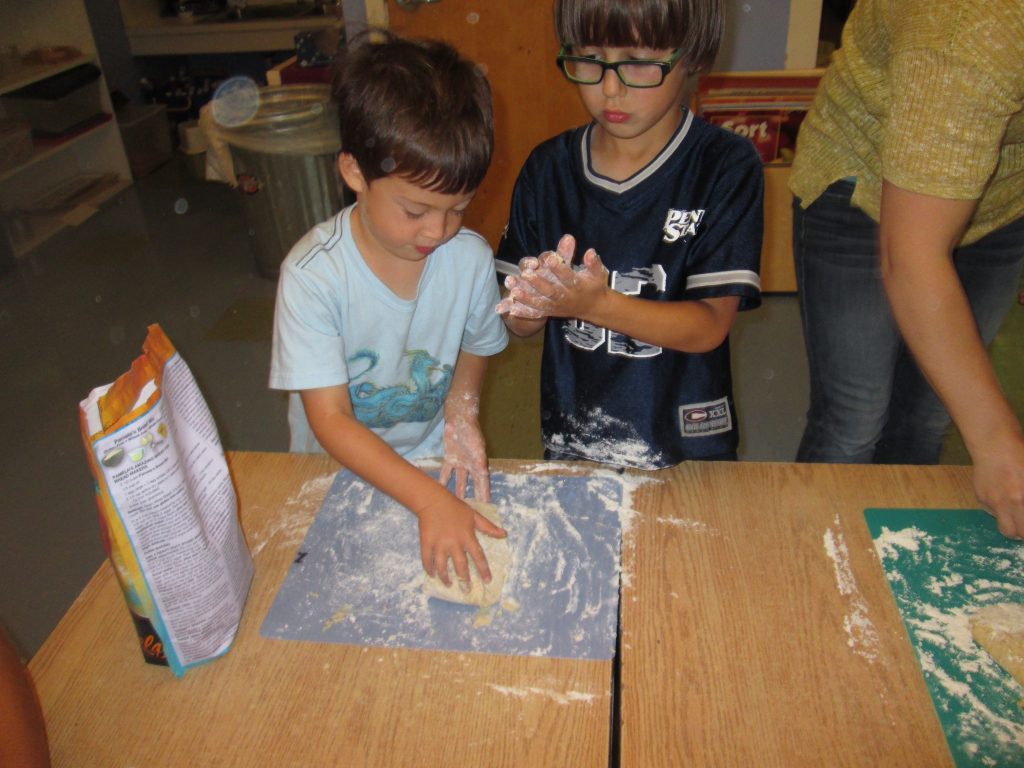 into a roll!
into a roll!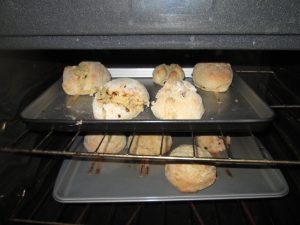 Step 4: Bake until golden brown.
Step 4: Bake until golden brown.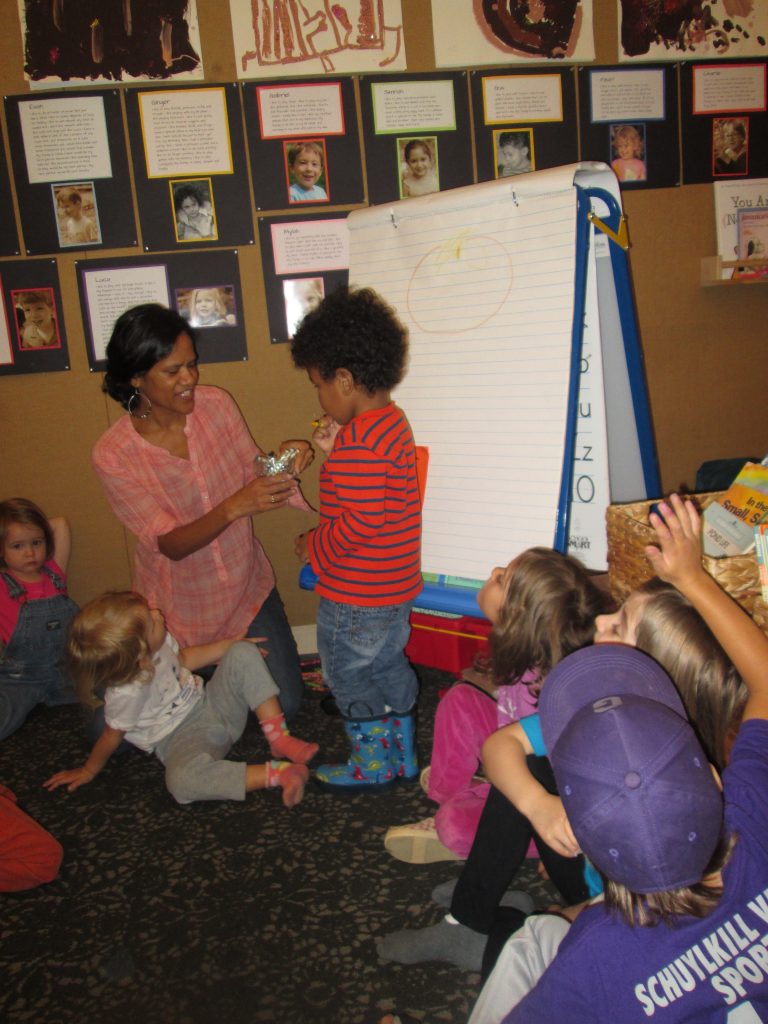 There was a man who lived in the moon. In the moon. In the moon. There was a man who lived in the moon. And his name was Aiken Drum. Chorus He played upon a ladle. A ladle. A ladle. He played upon a ladle. And his name was Aiken Drum. His hair was made of spaghetti. Spaghetti. Spaghetti. His hair was made of spaghetti. And his name was Aiken Drum. Gus: “His eyes are made of peas.” Eden Rose: “His nose is made of celery.” Iris: “His neck is made of carrots.” Luca: “His legs are made of pasta.”
There was a man who lived in the moon. In the moon. In the moon. There was a man who lived in the moon. And his name was Aiken Drum. Chorus He played upon a ladle. A ladle. A ladle. He played upon a ladle. And his name was Aiken Drum. His hair was made of spaghetti. Spaghetti. Spaghetti. His hair was made of spaghetti. And his name was Aiken Drum. Gus: “His eyes are made of peas.” Eden Rose: “His nose is made of celery.” Iris: “His neck is made of carrots.” Luca: “His legs are made of pasta.”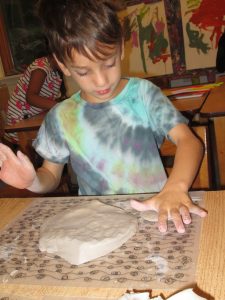 Creating recipes for clay food. “I’m making little balls. Some are ingredients. Some are not.”
Creating recipes for clay food. “I’m making little balls. Some are ingredients. Some are not.”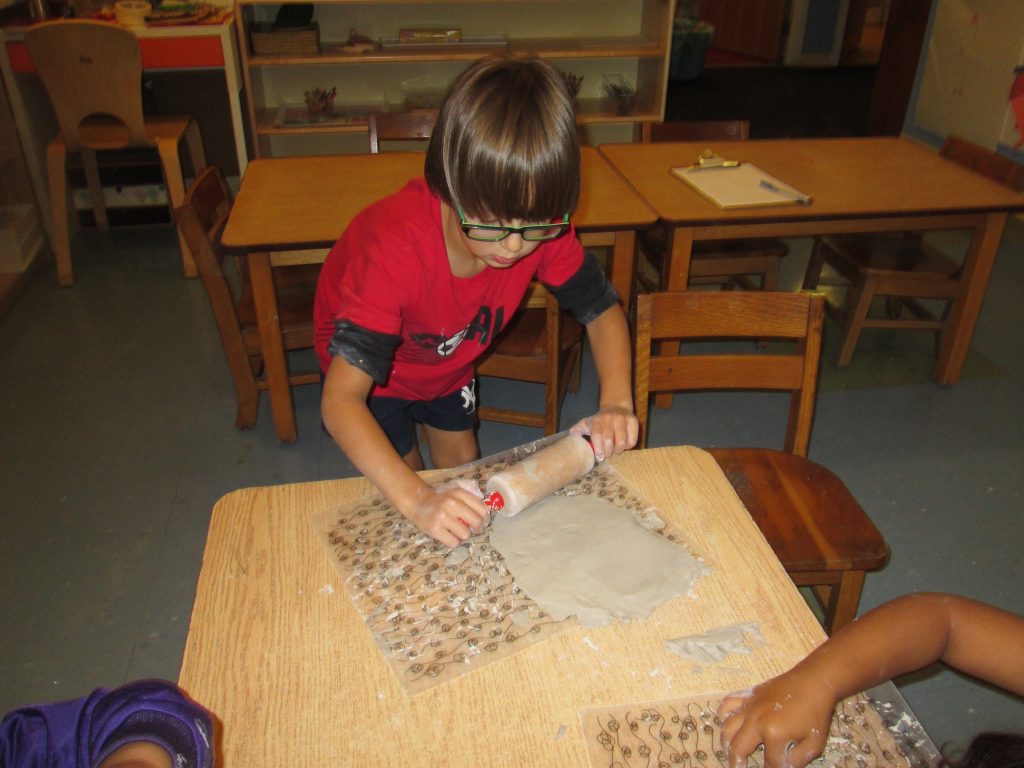 “This is my crust.”
“This is my crust.”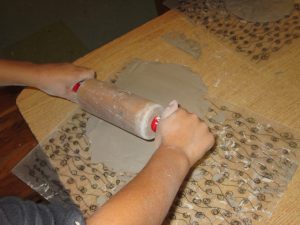 Iris: “I’m making an Aiken Drum Cake.” Pearl: “I’m making a little cake that’s flat. This is the sugar. It’s sweet and a little bready. It has chocolate.”
Iris: “I’m making an Aiken Drum Cake.” Pearl: “I’m making a little cake that’s flat. This is the sugar. It’s sweet and a little bready. It has chocolate.”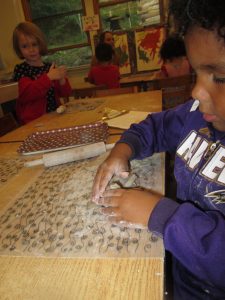 “The pizza is almost ready, in 10 minutes.”
“The pizza is almost ready, in 10 minutes.”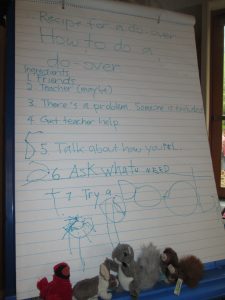 Recipe for a Do-Over during conflict resolution. Simran: Friendship makes you happy.” Mylah: “I like playing with my cousins because they’re so sweet.” Step 1. Play with a friend or friends; 2. if there’s a problem, such as excluding, get teacher help; 3. talk about how you feel; 4. ask what someone needs to feel better; 5. try a do-over by doing something over in a kind, helpful, safe way. “Include not exclude.”
Recipe for a Do-Over during conflict resolution. Simran: Friendship makes you happy.” Mylah: “I like playing with my cousins because they’re so sweet.” Step 1. Play with a friend or friends; 2. if there’s a problem, such as excluding, get teacher help; 3. talk about how you feel; 4. ask what someone needs to feel better; 5. try a do-over by doing something over in a kind, helpful, safe way. “Include not exclude.”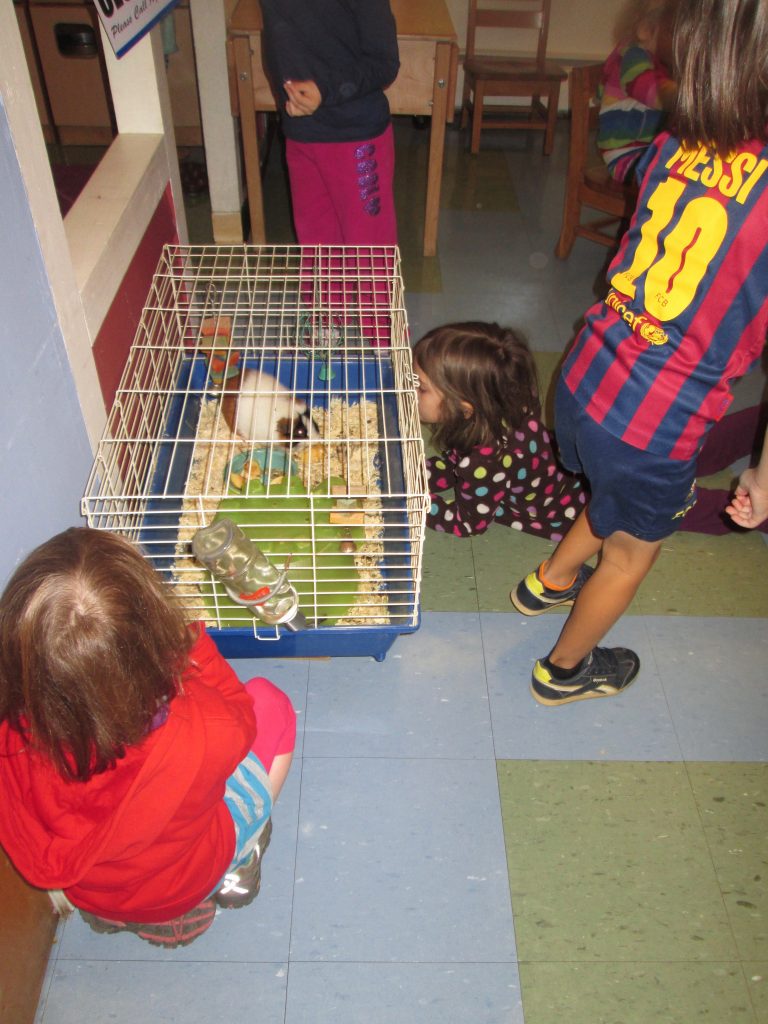 How do we care for our new pet guinea pig, Fred? We could write a letter to the kindergarten. Simran: “To find out about something we don’t know.”
How do we care for our new pet guinea pig, Fred? We could write a letter to the kindergarten. Simran: “To find out about something we don’t know.”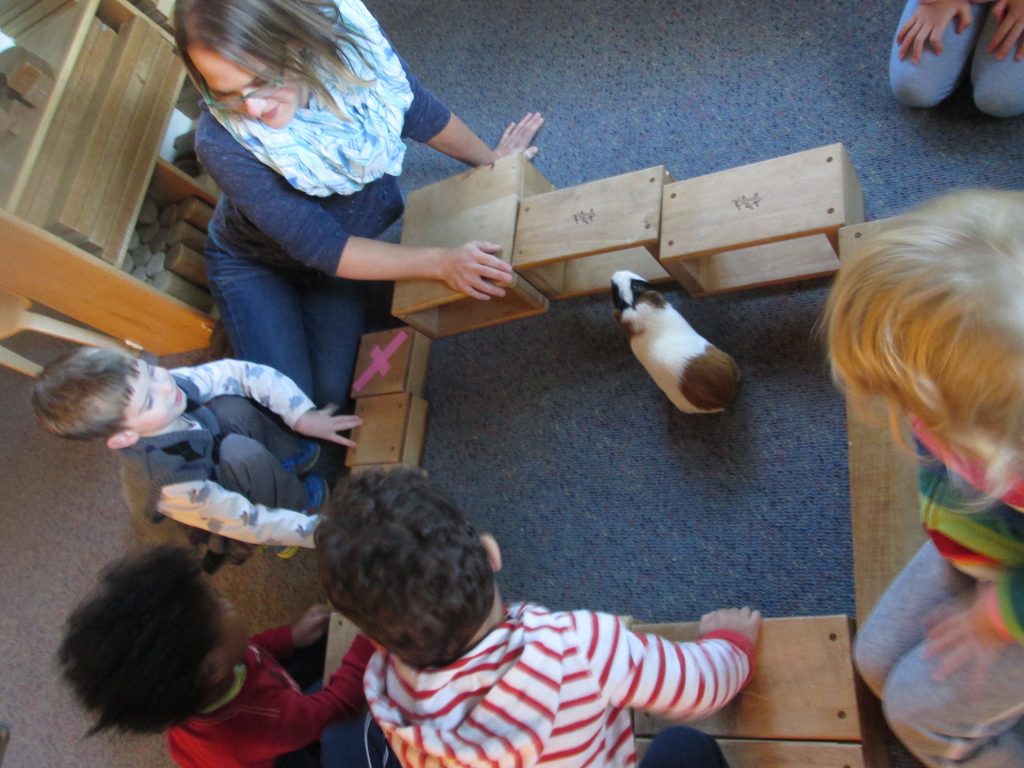 Step 1. Make sure he’s comfortable.
Step 1. Make sure he’s comfortable.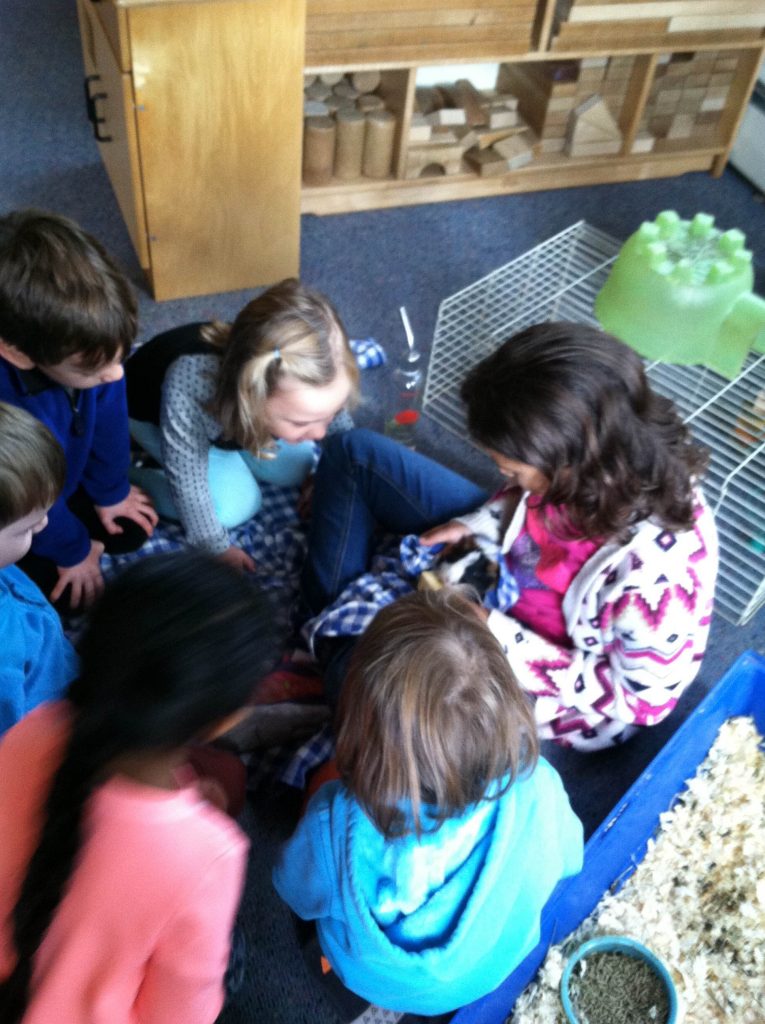 Step 2. Get to know him.
Step 2. Get to know him.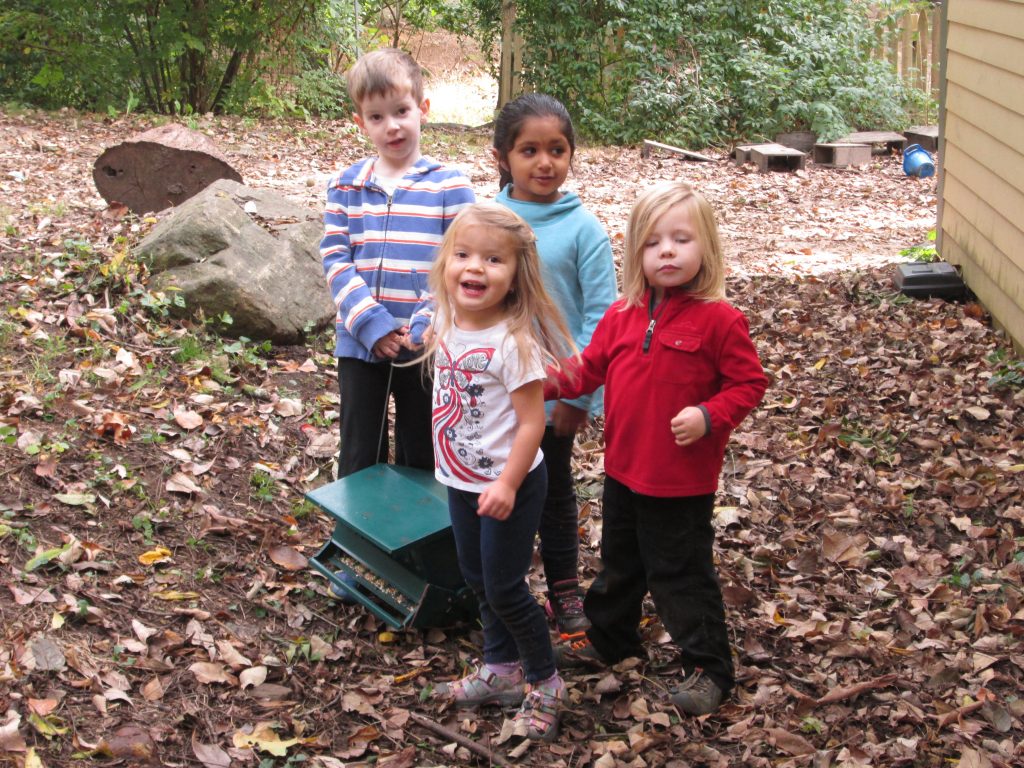 How do we take care of the wild birds? Fill the feeders!
How do we take care of the wild birds? Fill the feeders!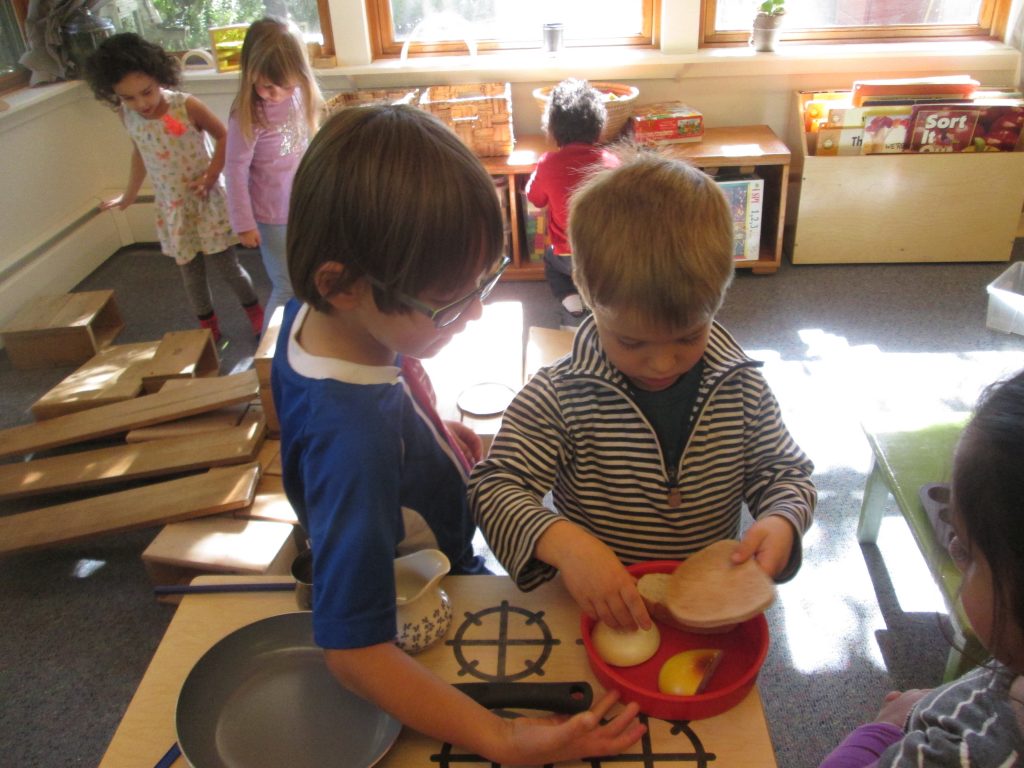 How to run Toto’s Restaurant. Step 1. Prepare the food using the finest ingredients. “Here, that’s milk bread. Do we have potato fries?” “No, we ran out.”
How to run Toto’s Restaurant. Step 1. Prepare the food using the finest ingredients. “Here, that’s milk bread. Do we have potato fries?” “No, we ran out.”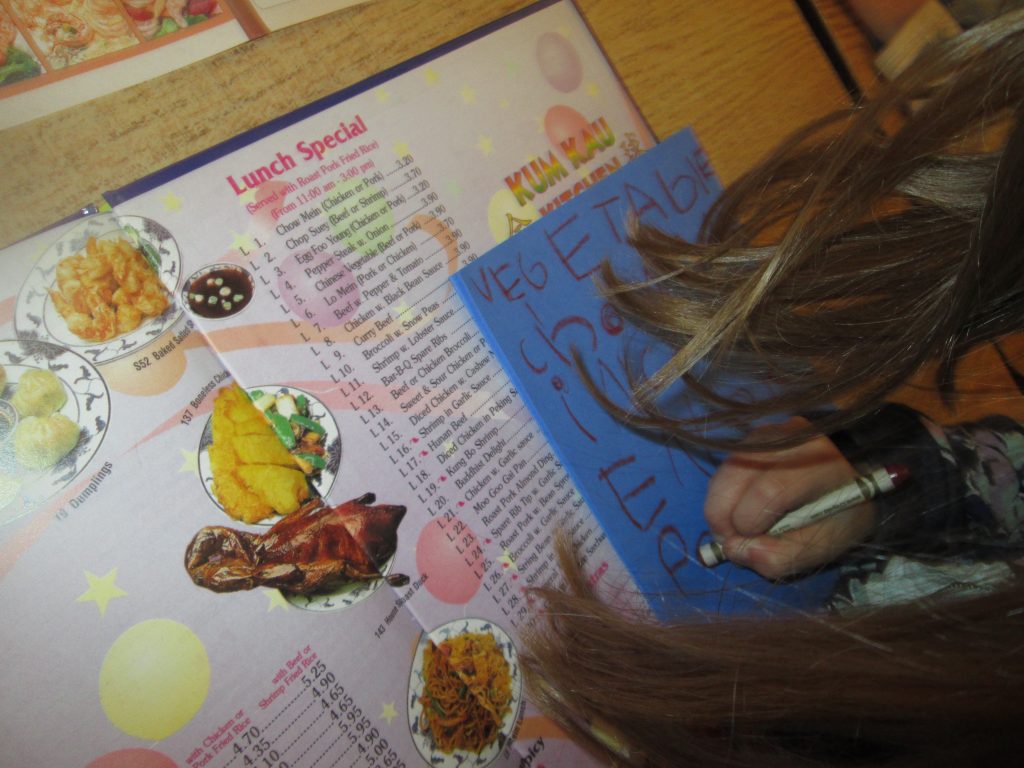 Step 2. Make menus.
Step 2. Make menus.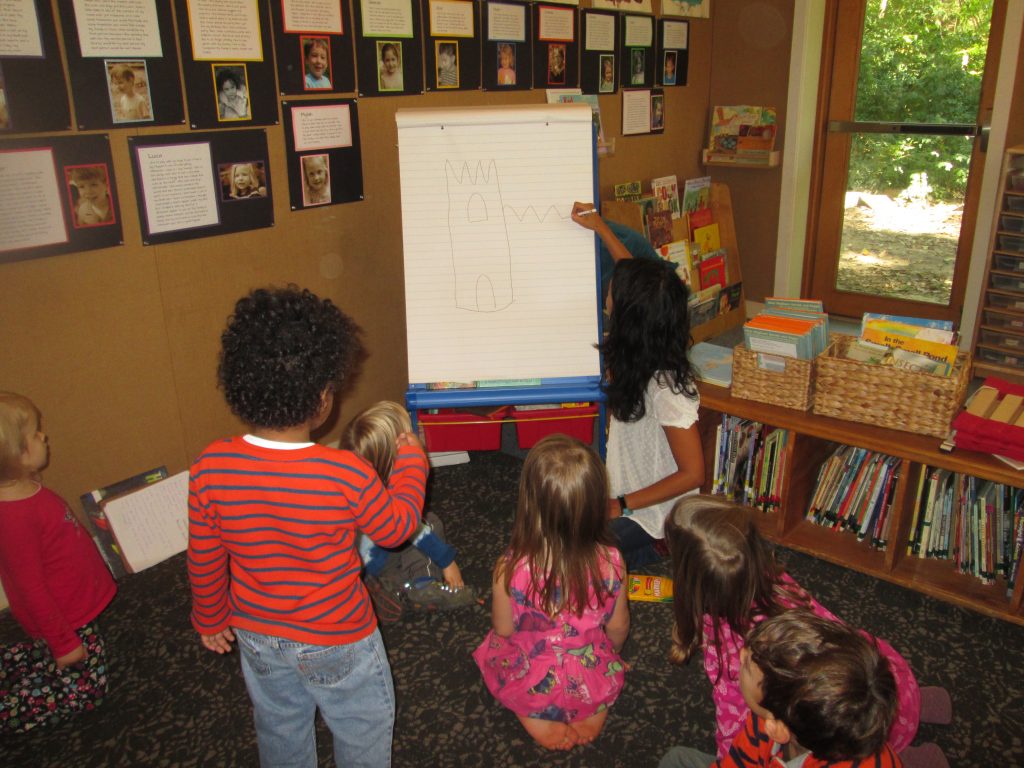 Language Arts Coordinator Rossana Zapf demonstrated during writing workshop how she might begin to tell and illustrate a story.
Language Arts Coordinator Rossana Zapf demonstrated during writing workshop how she might begin to tell and illustrate a story.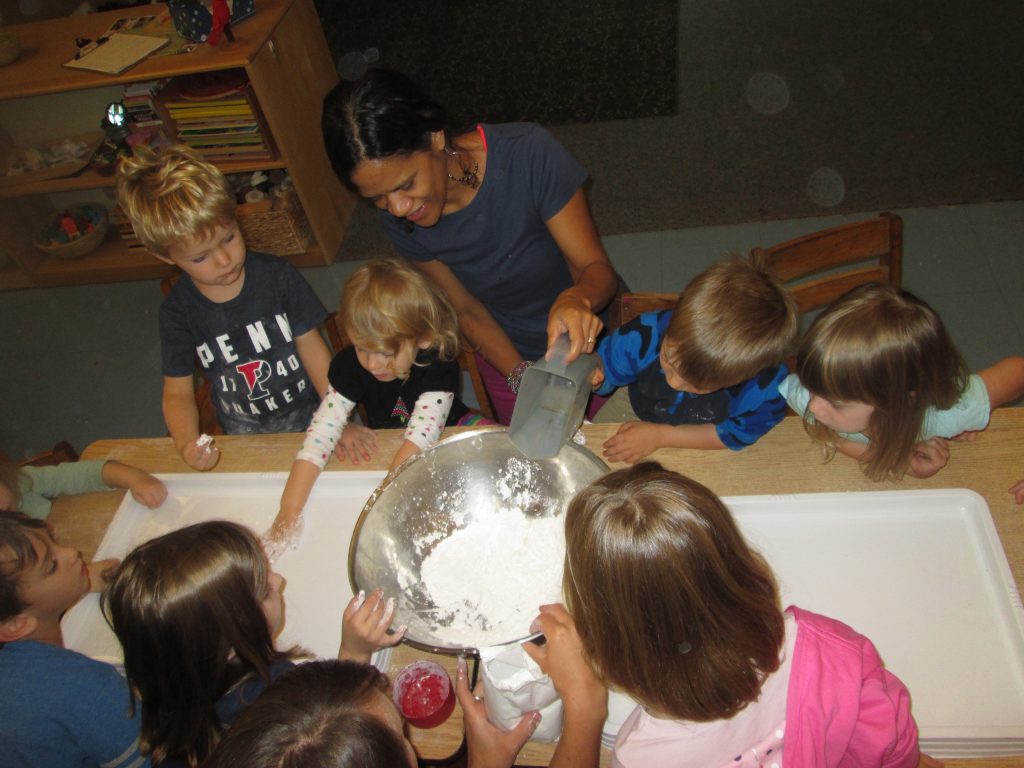 Following the recipe for making Ooblek. 1. Gather materials: 1 cup of water; 1 to 2 cups of cornstarch; mixing bowl; water color. “If you don’t add water it’ll be too dry.” “That’s called a measuring cup.” Preparation: Pour 1 cup of cornstarch into the mixing bowl, and dip your hands into it. Now pour the water in, slowly. Add a few drops of watercolor.
Following the recipe for making Ooblek. 1. Gather materials: 1 cup of water; 1 to 2 cups of cornstarch; mixing bowl; water color. “If you don’t add water it’ll be too dry.” “That’s called a measuring cup.” Preparation: Pour 1 cup of cornstarch into the mixing bowl, and dip your hands into it. Now pour the water in, slowly. Add a few drops of watercolor.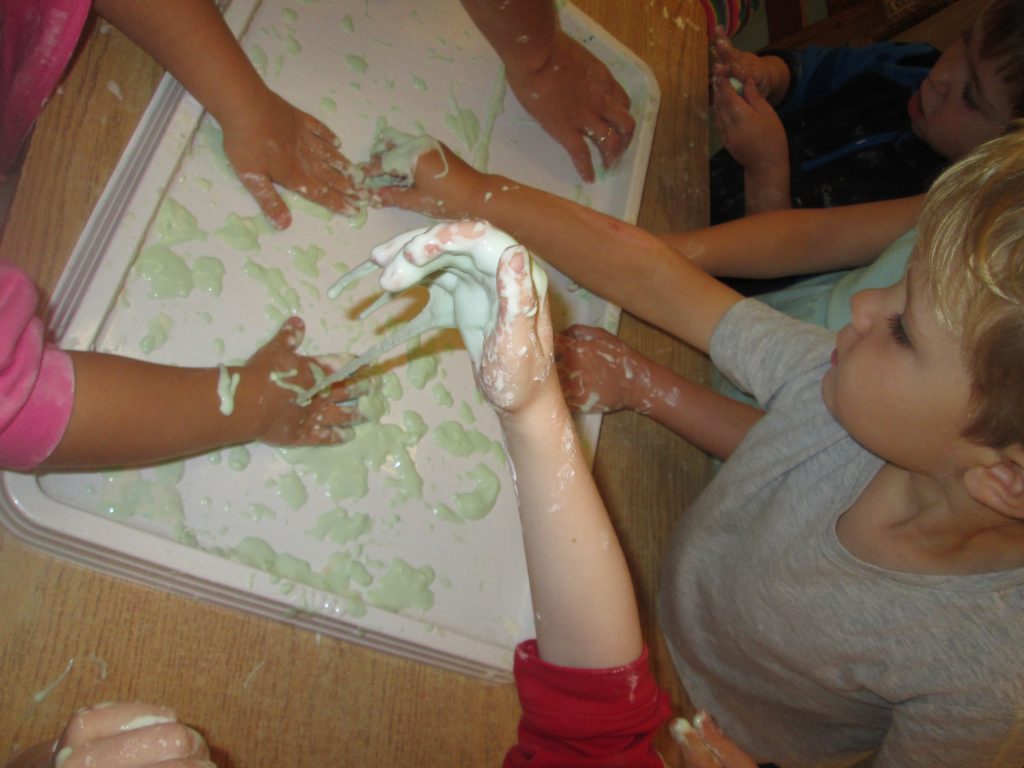 Procedure: Roll up your sleeves and prepare to get messy! “So smooth.” “Like flour.”
Procedure: Roll up your sleeves and prepare to get messy! “So smooth.” “Like flour.”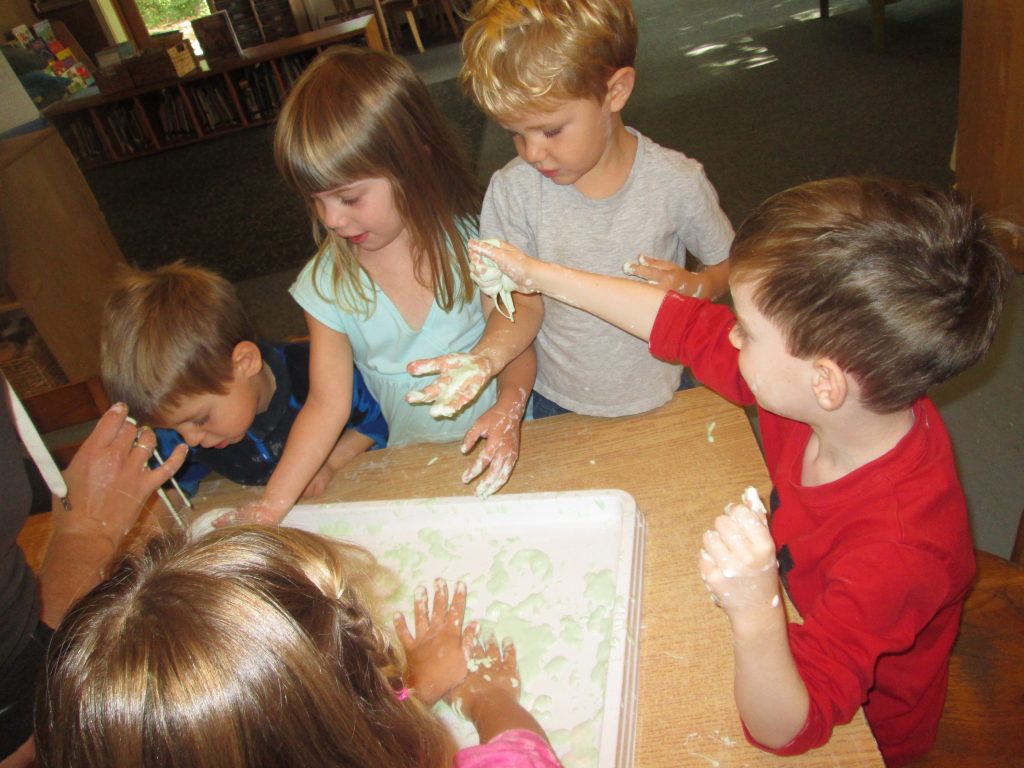 What happens when you hold a handful in your palm?
What happens when you hold a handful in your palm? Try squeezing it. Is it a liquid or a solid?
Try squeezing it. Is it a liquid or a solid?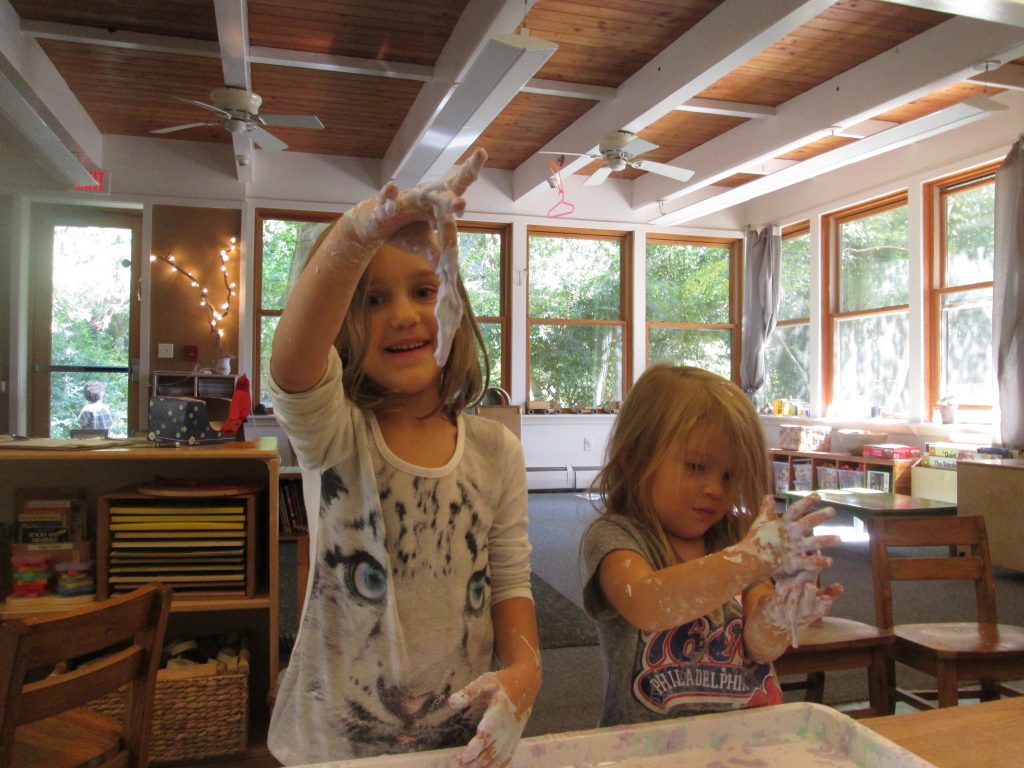 What happens when you release the pressure? “It feels really, really sticky! I love making Ooblek. I can do it all the time.”
What happens when you release the pressure? “It feels really, really sticky! I love making Ooblek. I can do it all the time.”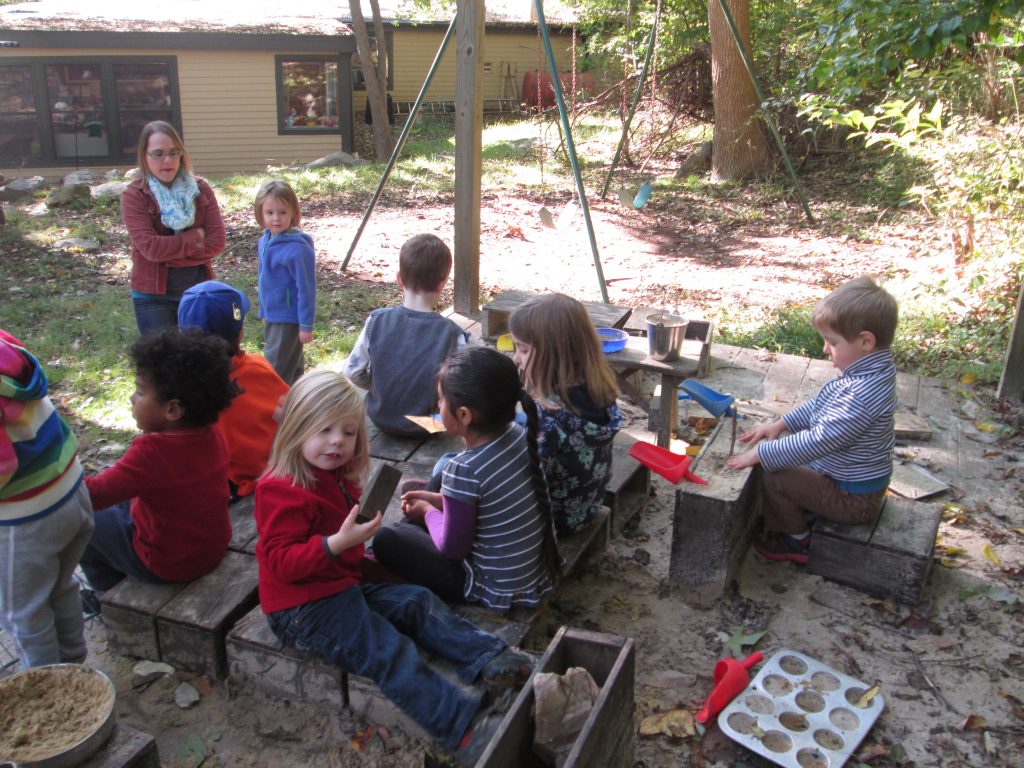 Brainstorming for supplies needed for the campsite.
Brainstorming for supplies needed for the campsite.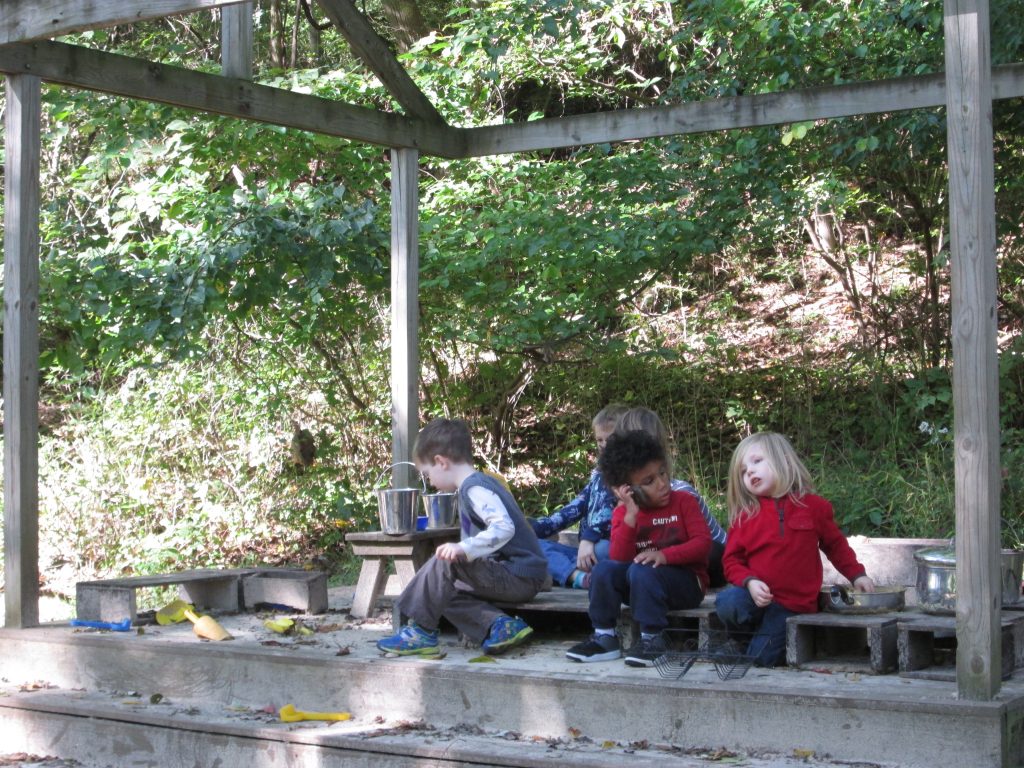 Alex: “Who wants to go to the marshmallow shop with me? If you want a s’more, please put your hand to your side.”
Alex: “Who wants to go to the marshmallow shop with me? If you want a s’more, please put your hand to your side.”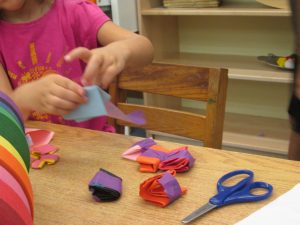 How to make a creature pod: “Hey, I’m making some different ones than you.”
How to make a creature pod: “Hey, I’m making some different ones than you.”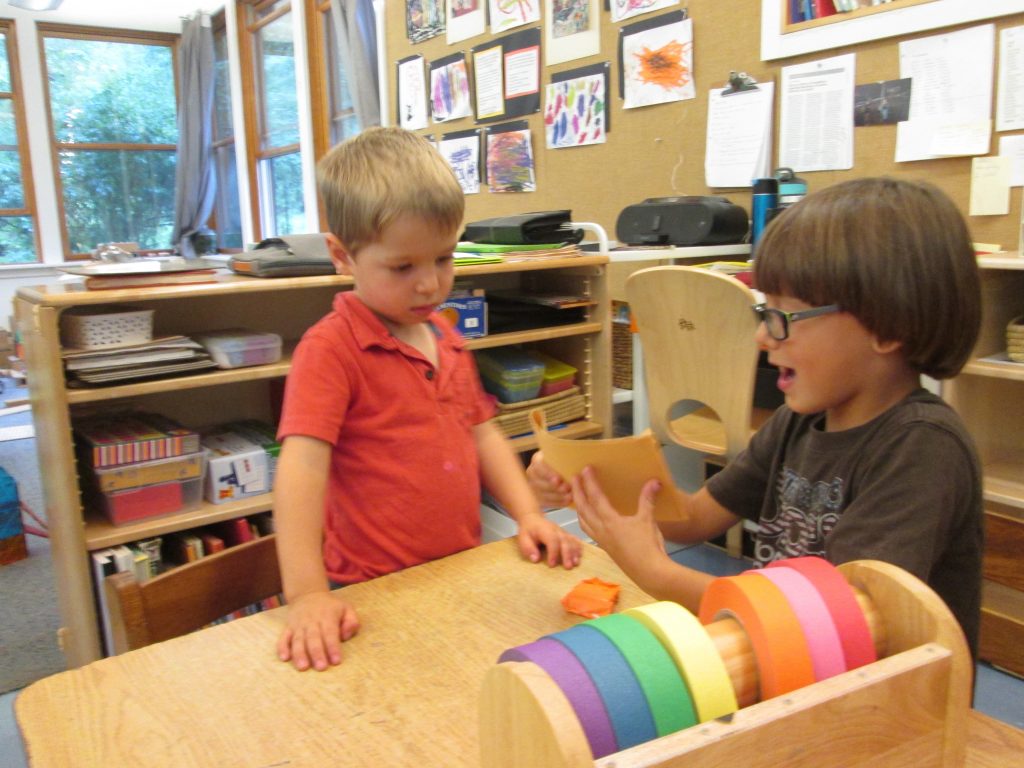 “I can fold it for you.” “I want it to look different.”
“I can fold it for you.” “I want it to look different.”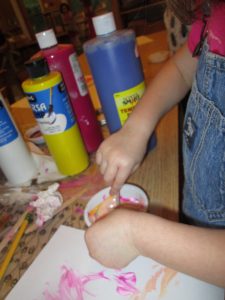 Mixing tempera colors.
Mixing tempera colors.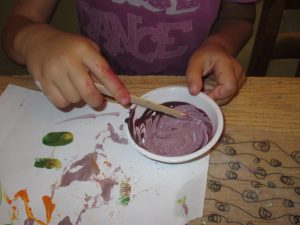 Recipe for sunset purple: 1. Pour a few drops of purple. 2. Add a little bit of white paint. 3. Mix. 4. Test the color on paper.
Recipe for sunset purple: 1. Pour a few drops of purple. 2. Add a little bit of white paint. 3. Mix. 4. Test the color on paper.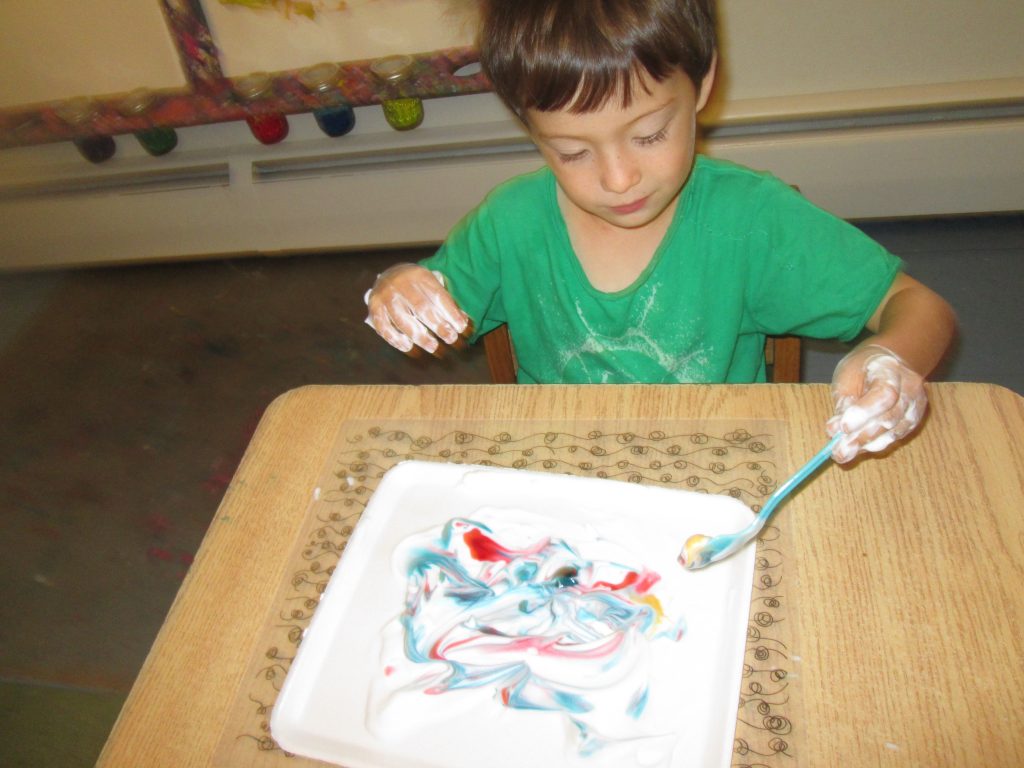 How to make shaving-cream prints. 1. Spread the shaving foam; 2. add droplets of color; 3. swirl around the colors.
How to make shaving-cream prints. 1. Spread the shaving foam; 2. add droplets of color; 3. swirl around the colors.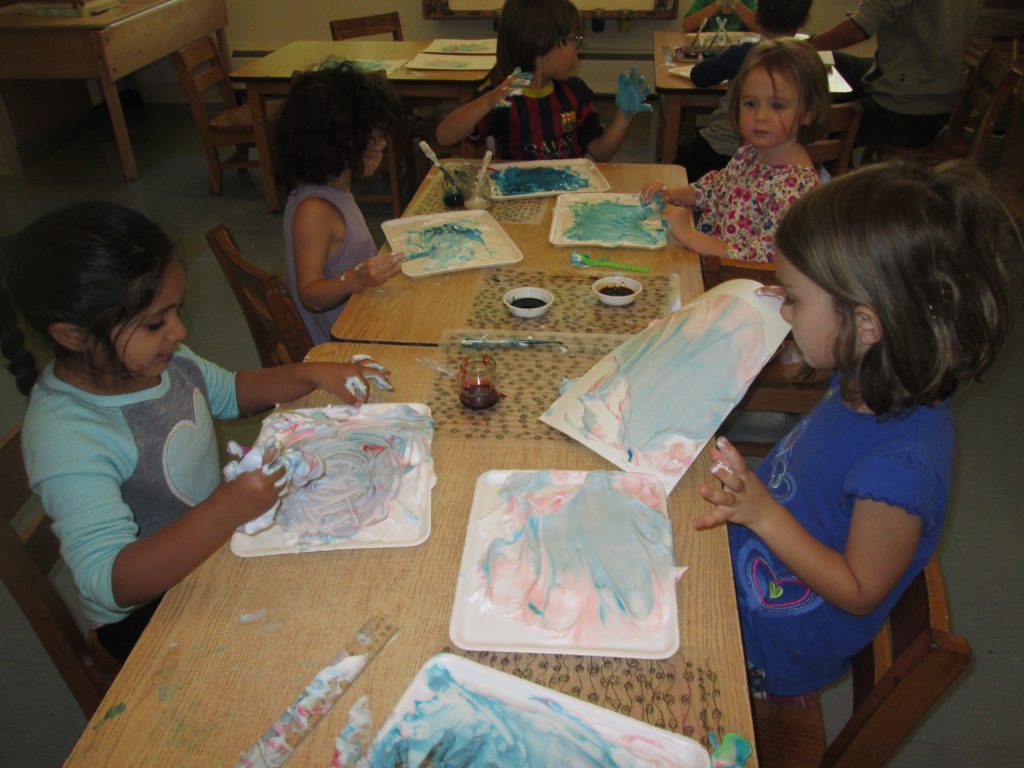 4. Place a piece of paper over your swirled foam; 5. count to 5; 6. carefully lift up your paper; 7. Scrape off the excess foam with a ruler, and enjoy your print.
4. Place a piece of paper over your swirled foam; 5. count to 5; 6. carefully lift up your paper; 7. Scrape off the excess foam with a ruler, and enjoy your print. Alex: “It looks like yogurt.” Simran: “Like whipped cream!”
Alex: “It looks like yogurt.” Simran: “Like whipped cream!”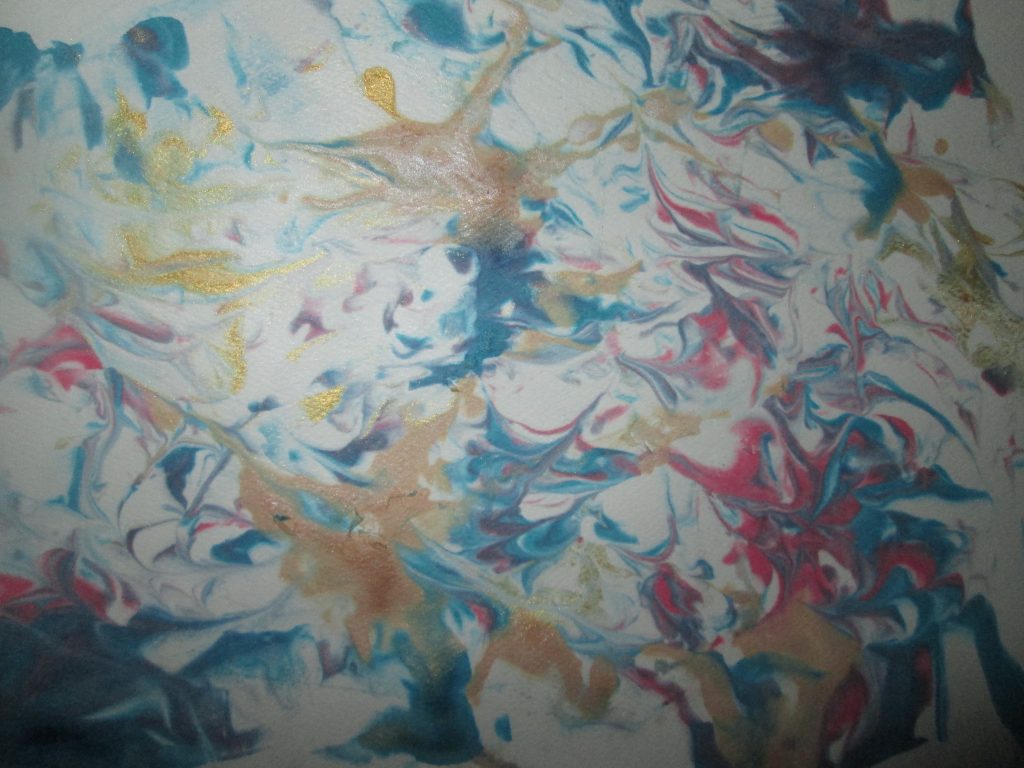 Gabriel: “Like a hurricane.” Mia: “Like an ocean.”
Gabriel: “Like a hurricane.” Mia: “Like an ocean.”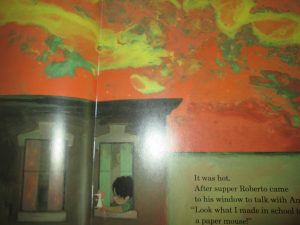 We were inspired by the marbled sky of the story Dreams, by Ezra Jack Keats. “Fire!” “Looks like a mix of sand and dirt and paint.”
We were inspired by the marbled sky of the story Dreams, by Ezra Jack Keats. “Fire!” “Looks like a mix of sand and dirt and paint.” How to take care of ourselves, each other, and our creek: 1. Put on your creek boots. 2. Be aware of your personal space.
How to take care of ourselves, each other, and our creek: 1. Put on your creek boots. 2. Be aware of your personal space.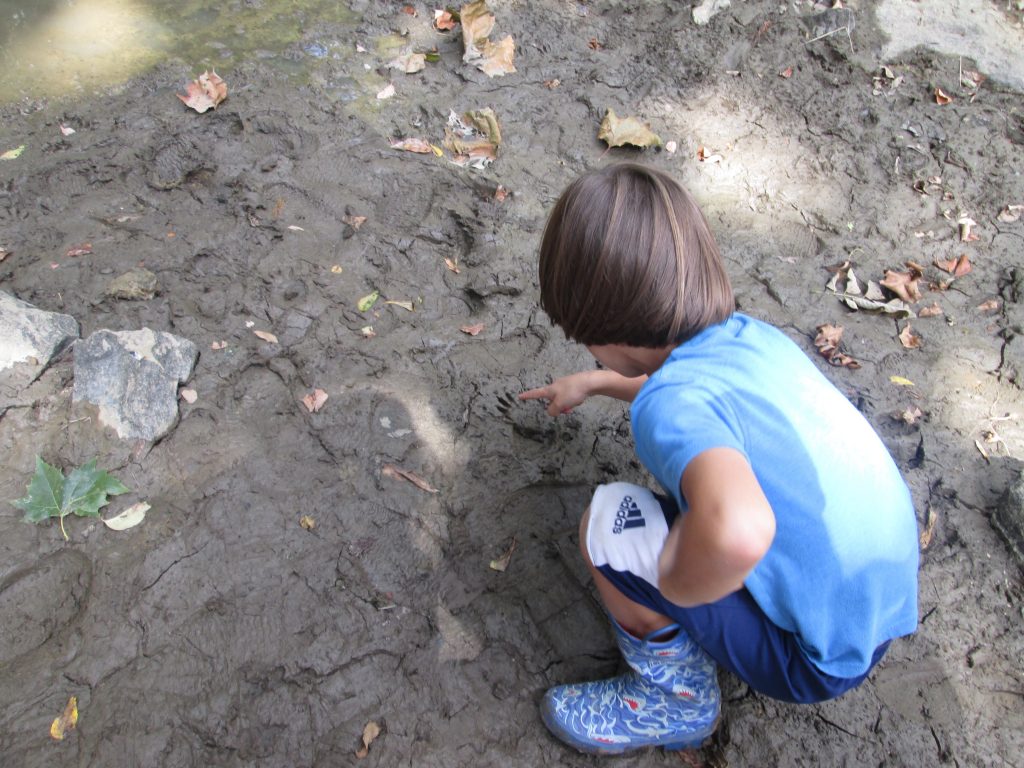 3. Look closely to find something, such as raccoon tracks.
3. Look closely to find something, such as raccoon tracks.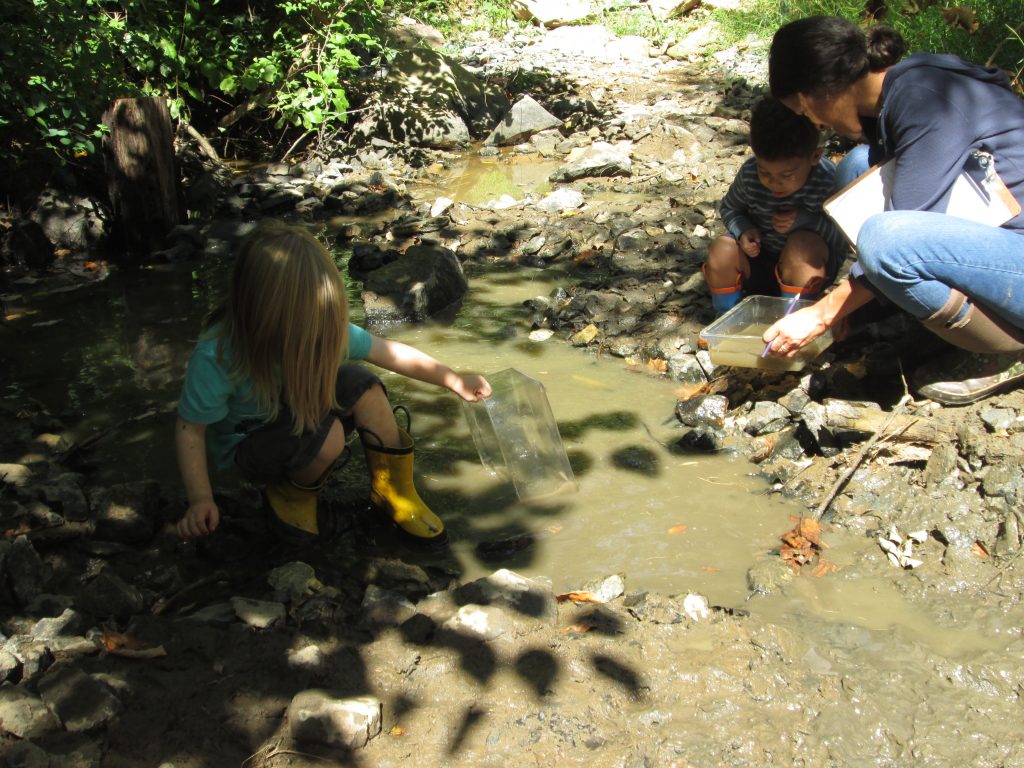 4. Release any living thing that you were observing.
4. Release any living thing that you were observing.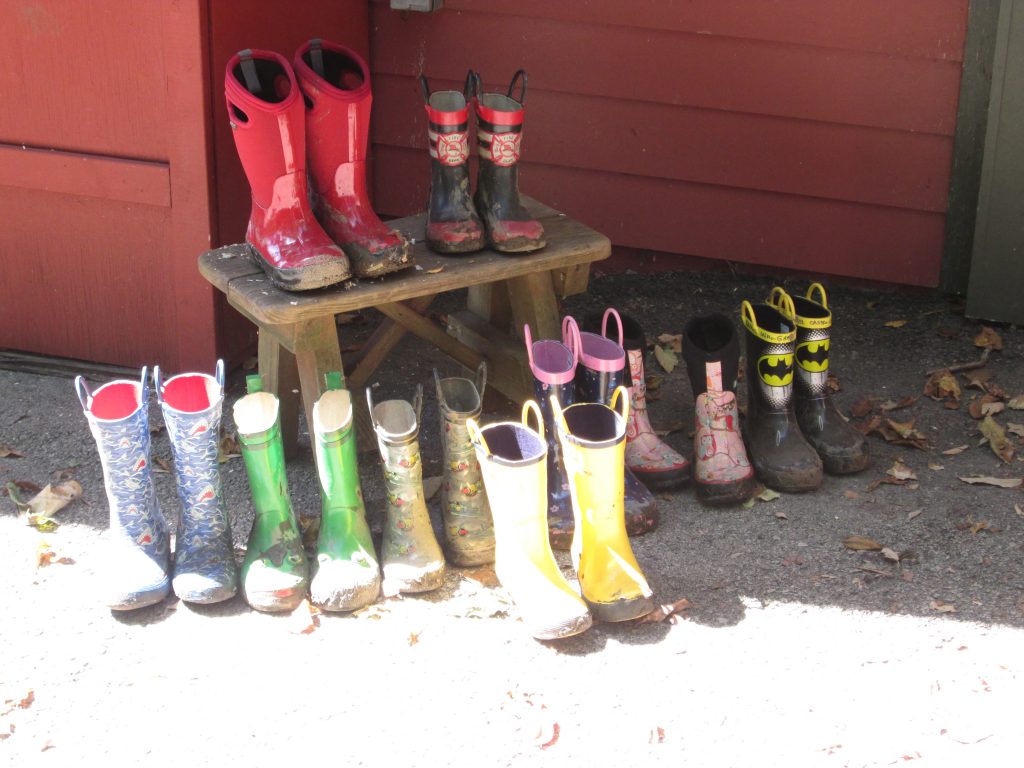 5. Take off your creek boots before coming inside for lunch!
5. Take off your creek boots before coming inside for lunch!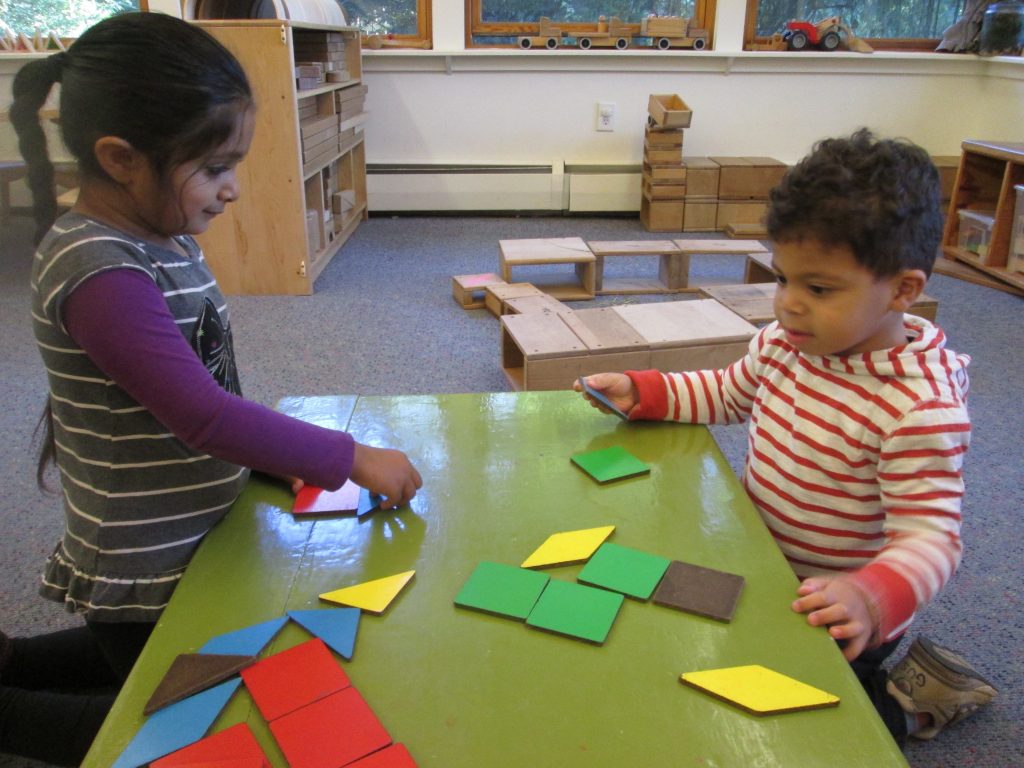 Directions to the Shape Card Game: “For 2 to 4 players.” “1. Turn over the shapes. 2. Ask the person which color it is.” “Would you like to be part of the card game?”
Directions to the Shape Card Game: “For 2 to 4 players.” “1. Turn over the shapes. 2. Ask the person which color it is.” “Would you like to be part of the card game?”
